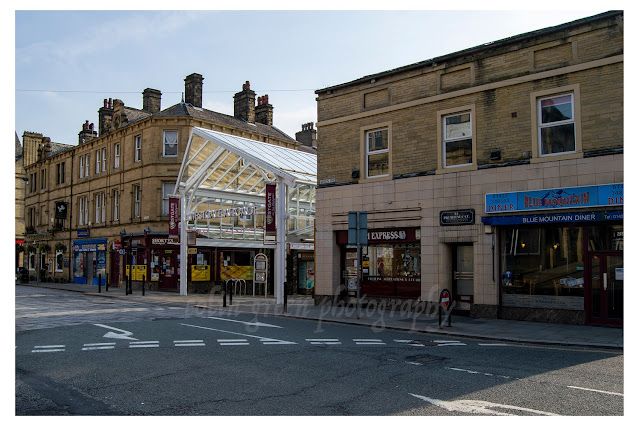Halifax is a town steeped in history, where cobbled streets and grand Victorian architecture whisper stories of a rich industrial past. Tucked away within this historic fabric lies a modern gem that seamlessly blends old and new: Westgate Arcade. This vibrant, covered walkway, captured beautifully in a series of photographs from May 27th, 2018, offers a fascinating glimpse into a thoughtful urban regeneration project.
A History of Transformation
Westgate itself is one of Halifax's most ancient thoroughfares. Originally conceived to provide a vital link to the iconic Piece Hall—a stunning Georgian cloth hall—the street's creation was no simple task, even requiring an Act of Parliament. It was a route that connected Southgate to Market Street, leading towards the Piece Hall's western gate. For many years, however, the area remained largely underdeveloped and quiet, its potential waiting to be unlocked.
The late 1990s marked a turning point. A vision emerged to revitalise this forgotten corner of the town centre. Several properties were acquired, and an ambitious plan was unveiled to transform the area into a bustling, covered pedestrian arcade. This plan included integrating Carrier Street, creating a seamless connection to the nearby Borough Market, and breathing new life into the urban space.
In 2006, the vision became a reality. Westgate Arcade was completed, and the glass-roofed structure became an instant hit. The pictures, taken on a bright spring day with a Nikon D3300, perfectly capture the essence of this transformation. The clear, modern glass and steel structure stands in beautiful contrast to the historic brick buildings that flank it.
A Modern Hub for Independent Businesses
What makes Westgate Arcade so special is not just its striking architecture but the community it fosters. The arcade has become a welcome addition to the Halifax scene, serving as a hub for a diverse mix of independent shops, leisure outlets, and bars.
As you look at the photographs, you can almost feel the atmosphere. The shot of the Carrier Street entrance, framed by lush green potted plants, invites you into a serene and inviting space. The interior view shows the length of the arcade, adorned with strings of Union Jack bunting—a festive touch that adds to the welcoming feel. Signs for unique businesses like "Dolly Peg" and "K.S. Hunjan Dental Practice" hint at the variety of services available, from bespoke retail to essential healthcare.
The external views from Southgate and Market Street reveal how the arcade's design respects and complements its surroundings. The striking A-frame glass entrance serves as a beacon, drawing people in from the main street. The photographs taken from the Southgate and Market Street entrances show the arcade nestled between traditional stone buildings, a perfect marriage of old and new. The sun catches the glass roof, casting geometric shadows on the paved walkway and highlighting the intricate design.
A Timeless Snapshot
These images, captured by a keen eye on a pleasant day in 2018, are more than just pictures of a building. They are a timeless snapshot of a community space that has successfully adapted to the demands of modern urban life while honouring its historic roots. Westgate Arcade is a testament to the power of thoughtful development—a place where history is not erased but built upon, creating a vibrant and welcoming destination for locals and visitors alike. It's a must-visit for anyone looking to experience the true heart of Halifax.
Clicking any of the images below should open a link in another window to my Colin Green Photography store on Zazzle.








































